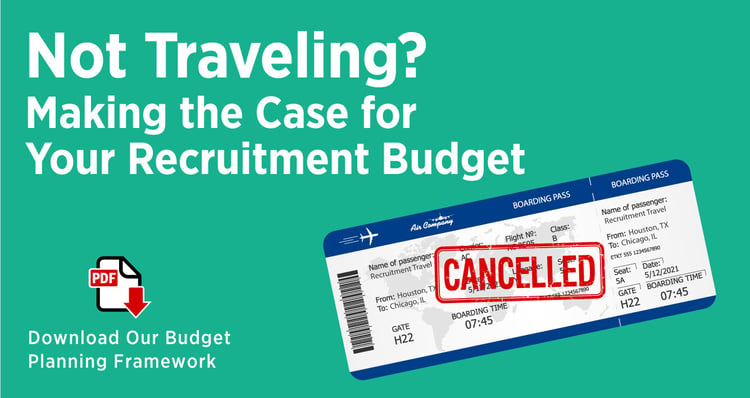
Your budget is the tactical expression of your strategy. What you value most is where you put your funds. Or at least, that’s how it should be.
Whether you are submitting your budget for approval or evaluating the budget requests others submit to you, this year’s budget season is looking a little different. International recruitment travel? Still off the table. Student recruitment dollars? Still in need of allocation.
With your standard recruitment playbook out the window, a comprehensive budgetary framework to evaluate all the different strategic initiatives on the horizon becomes more important than ever.
Are you devoting enough to the digital channels available? Are you selecting the right channels for your institution? The virtual fair folks are telling you they are really the way to go. Of course they are. Have they shared hard attendance, engagement, and results numbers to prove it?
To help you and your team identify, assess, and evaluate your recruitment initiatives this year, the Intead team took our collective experience with so many different institutional assessments and strategic planning sessions and simplified the process of budget evaluation into 3 Essential Budget Questions — a 1-pager that offers a simplified, high-level approach to considering any budget request.
With this framework for evaluating your plans and whether they merit investment, you’ll take those complex quandaries down to a basic starting point and identify where the opportunities for growth really are.
We think you’ll want to share this one widely. This and a quick review of our recent, highly popular post about how to say no to ideas that are not good enough.
Read on to access the downloadable budget consideration flowchart.
The problem: You want to move your institution from point A to point B. Your plans exist and yet, you don't seem to be arriving at point B. Or perhaps you arrive, but not in style.
Our 3 Essential Budget Questions chart offers a framework as you develop your rationale for why a particular project deserves funding. This simplified framework can help you cut through the noise to identify the true value of a project and the potential it has to meet your strategic goals.
The downfall of any strategy? Not enough prioritization and not enough funding. (Oh, and internal defeatist culture. But that is an entirely different organizational management issue to address at another time).
By asking yourself the essential questions contained in the chart, you can identify, assess, and evaluate how individual requests fit (or don’t) into your larger institutional priorities.
The chart will also help you identify opportunities you are missing and the reasons why that journey from point A to point B isn’t as smooth as you might like. For each strategic goal, you’ll identify roadblocks such as lack of skills (team/staffing), lack of capacity (time), and insufficient tools (technology, resources, etc.). It pushes you to consider how you can improve on these areas through your existing resources or, if necessary, outsourced expertise.
And speaking of outsourced expertise (and what to do with those international recruitment dollars), next week we will be hosting a webinar event with CIEE, Your Students. Your Programs. In China: Creating US-Style Classrooms for Your Chinese Students, in which we’ll be chatting all things international recruitment strategy in China post-pandemic, including a game-changing new approach for your student pipeline.
Drop us a note and you’ll be the first to receive the registration link as soon as we go live.
And in the meantime, we’ll be here cheering you on with more resources as you near that budget season finish line. Always available for a quick consult if our trend analyses can support your decisions.




